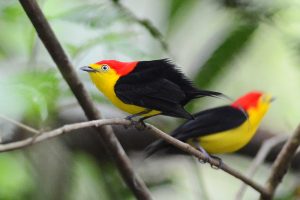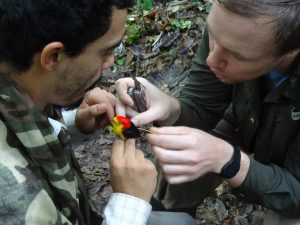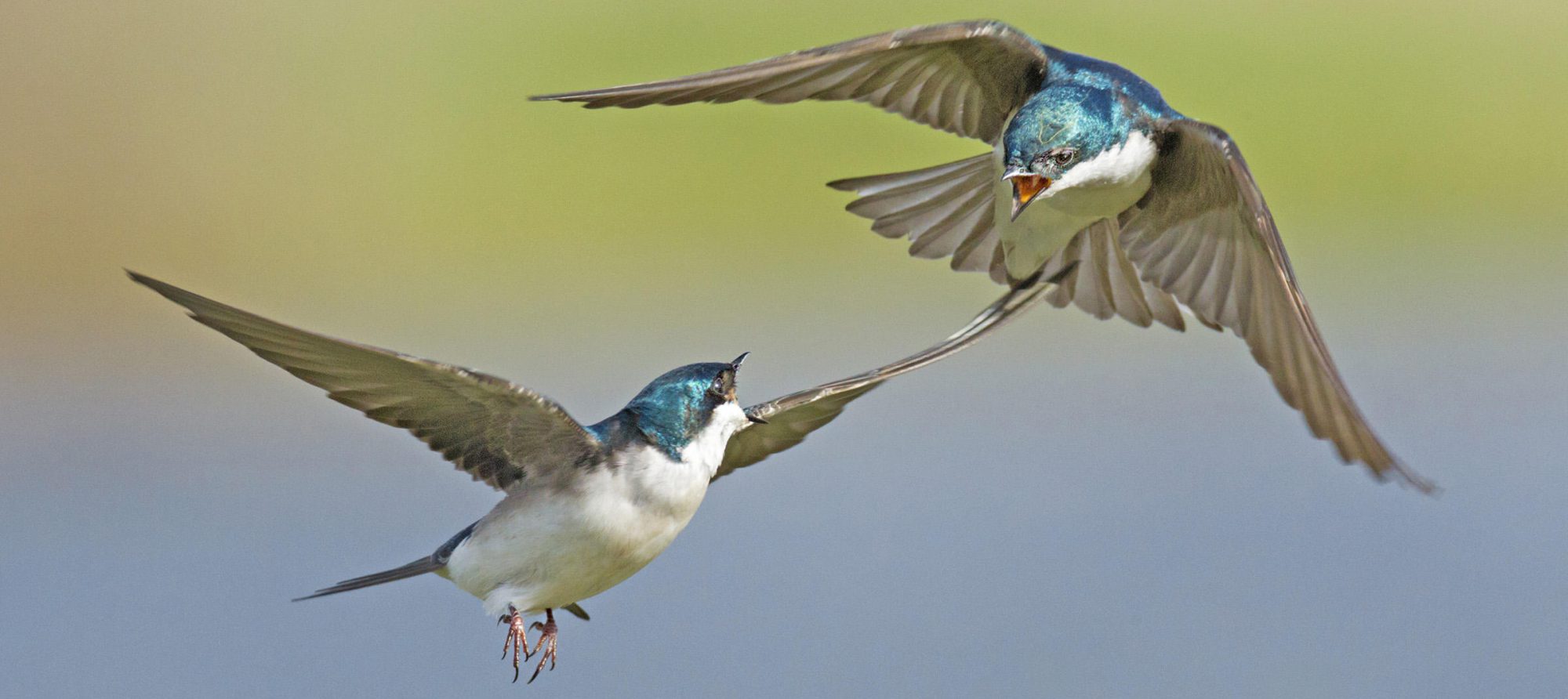Proyecto Saltarín


Two technicians attach a coded nano tag to an adult male wire-tailed manakin. We use this telemetry system to quantify individual variation in cooperative behavior
Among all animals, individuals vary in behavior and this variation ultimately results in differences in reproductive success. However, we know relatively little about the neuroendocrine mechanisms that underlie individual differences in behavior. For example, why are some individuals more aggressive or cooperative than others? While the hormones that regulate “typical” male reproductive and associated behaviors (territorial aggression) are well investigated, we lack an understanding of the hormonal bases of evolutionarily rare social behaviors such as cooperation. Wire-tailed manakins, Pipra filicauda, in the lowland Amazon rainforest of Ecuador provide an opportunity to study the links between the neuroendocrine system, behavior, and social networks because males form cooperative partnerships that are the foundation of complex social networks. This research program integrates behavioral and neuroendocrine approaches towards understanding the basis of individual variation in cooperation and how those individual-level processes scale up to influence an individual’s role and position within their social network and ultimately resulting in reproductive success. From a broader perspective, this project is providing new insights into how selection has shaped the evolution of neuroendocrine-mediated social behaviors. The novelty in this project will be linking two biological networks (neuroendocrine-regulatory and social networks) to transform our understanding of how the neuroendocrine system influences social dynamics.
Here, two male wire-tailed manakins perform a cooperative display. This research takes place at Tiputini Biodiversity Station in Northeastern Ecuador.
